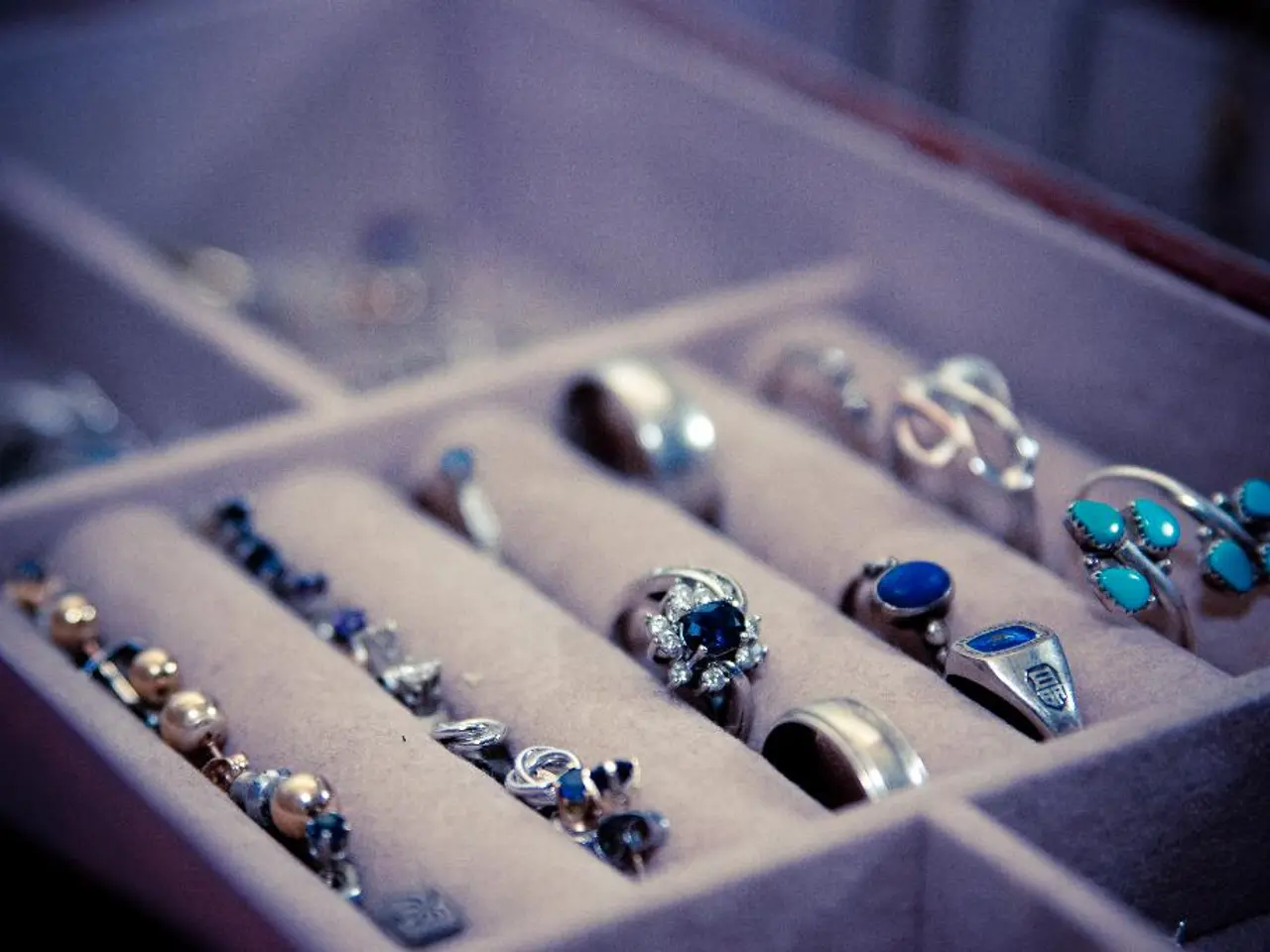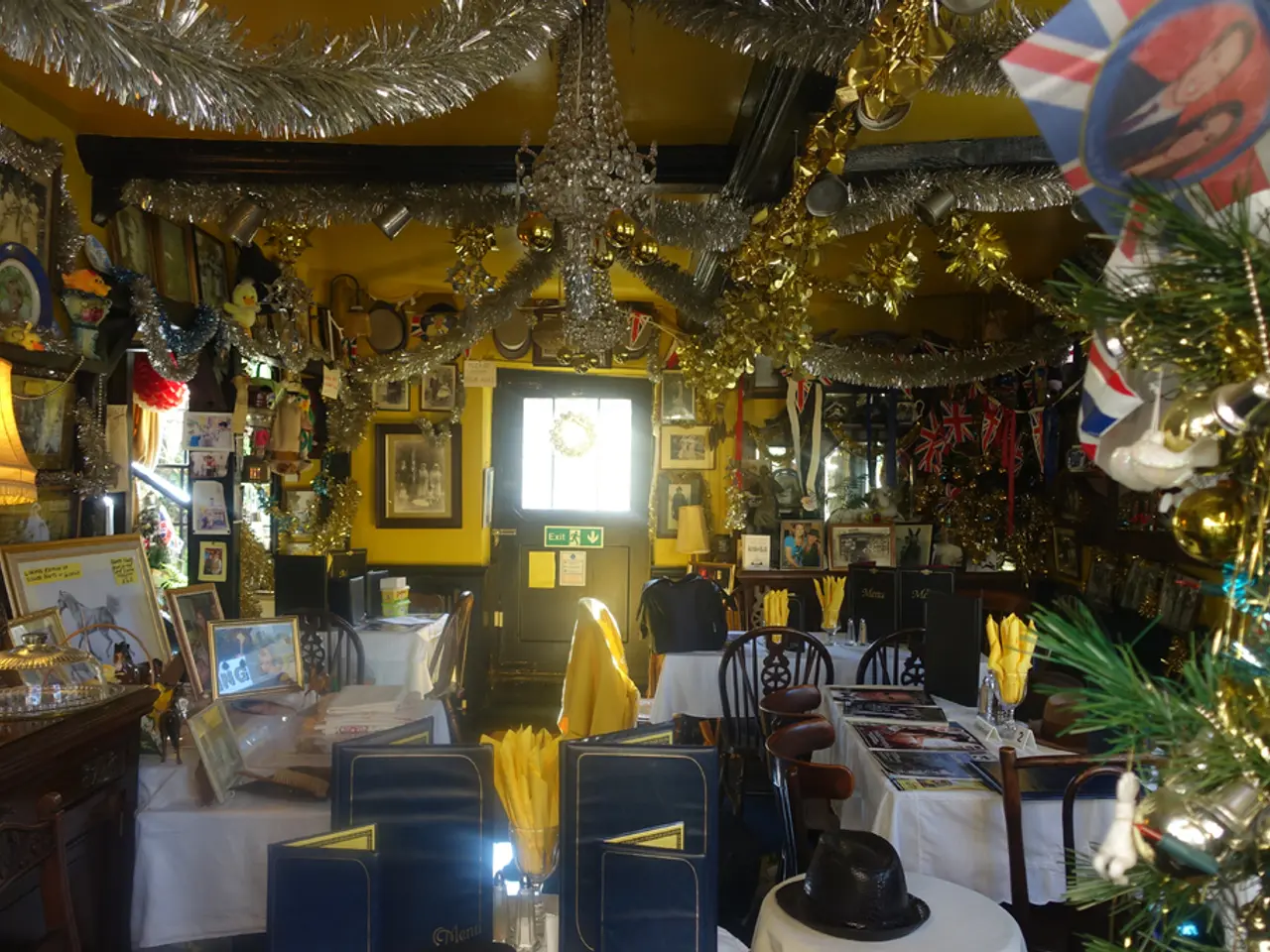Delve into the Past: Unraveling the Timeline of Garnets in Vintage Jewelry
In the Victorian era (1837-1901), garnet emerged as a prominent gemstone in decorative jewellery, captivating wearers with its rich colour, symbolic meanings, and versatile design appeal.
During this period, garnets were particularly sought after in sentimental and mourning jewellery. Their deep red colour symbolised love, commitment, and remembrance, making them ideal for mourning pieces where black jet was otherwise dominant. Garnet jewellery was often crafted into clusters or floral and star patterns set in gold or silver, sometimes embellished with pearls or diamonds to enhance elegance. This use allowed mourners to express grief with subtle colour and symbolic floral motifs, linking garnet jewellery to cultural rituals and emotional expression of the era.
Garnet's popularity in antique jewellery also stemmed from its relative affordability compared to diamonds, making it accessible for a broader market. Its durability and vibrant colour allowed jewellers to create intricate and visually striking pieces suited for daily wear or special occasions.
As the Victorian era transitioned into the Belle Époque and Edwardian eras, fine jewellery was dominated by diamonds and platinum. However, garnets remained cherished for their warm colour and historical connotations. Jewellery styles of these periods often emphasised delicate, nature-inspired motifs—floral garlands, ribbons, and bows—that complemented garnets well. Although not always the centre stone in high-society pieces, garnets were preferred in more affordable or sentimental items.
The enduring demand for garnet until the beginning of the 20th century can be attributed to its rich, deep red colour that symbolised passion, protection, and memory, resonating in romantic and mourning contexts. It also offered a balance of affordability and beauty, providing an alternative to more expensive stones like diamonds or rubies without sacrificing visual impact. Furthermore, garnet's versatility in design enabled its use in clusters, cabochons, and intricate patterns, aligning with the changing jewellery fashions of Victorian, Edwardian, and Belle Époque styles. Lastly, garnet's cultural significance where garnet’s symbolism in protection and remembrance aligned with the sentimental values embraced by antique jewellery wearers played a significant role in its continued popularity.
Notable jewellers like Peter Carl Fabergé and London jewellers began setting demantoid garnet in jewellery and accessories in the 1880s. Meanwhile, jewellers in Czechoslovakia (now the Czech Republic and Slovakia) began setting clusters of small faceted pyropes in base metal, providing affordable jewellery for the mass market.
In summary, garnet's widespread use and popularity in antique decorative jewellery were driven by a combination of its appealing colour, symbolic meaning, and practical accessibility, making it a fixture in jewellery design and sentiment up until the early 1900s.
A foundation course in gemmology could provide insights into the historical significance and contemporary use of garnets in decorative jewellery, explaining their popularity during the Victorian era and beyond. Publications about fashion-and-beauty and home-and-garden might feature examples of antique garnet jewelry, showcasing their aesthetic appeal and versatility in various designs. One's lifestyle, even today, may reflect the sentimental value attributed to garnets, as some prefer wearing these gemstones for their symbolic representation of love and remembrance. Diploma programs in jewelry design could offer courses that explore the art of setting garnets, allowing students to create pieces inspired by Victorian, Belle Époque, and Edwardian eras.




